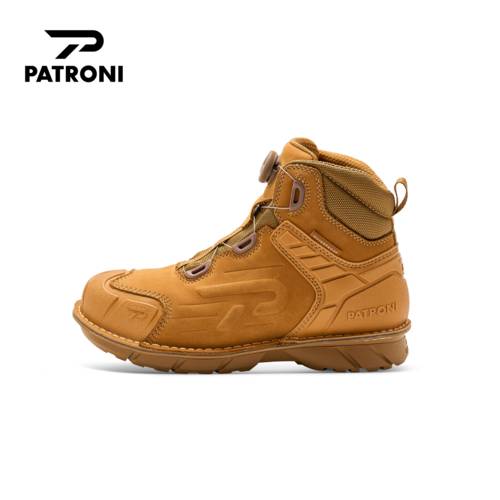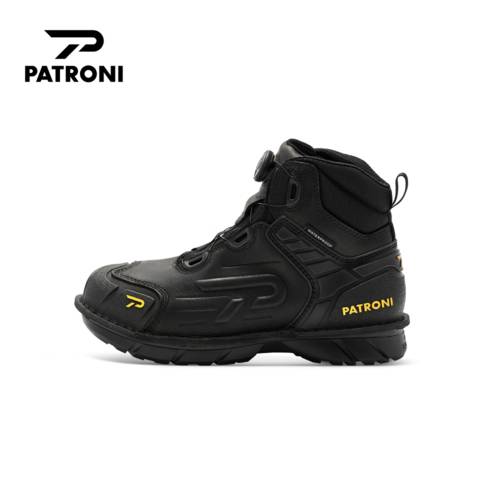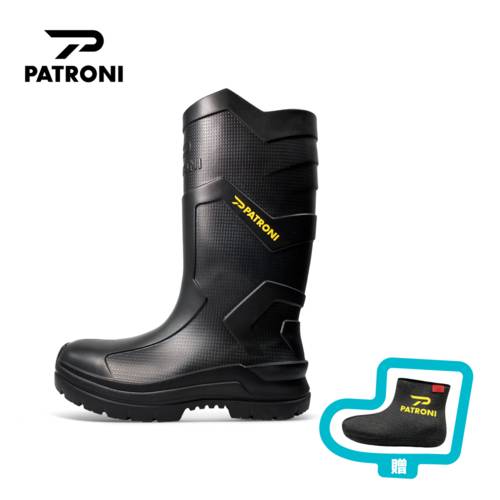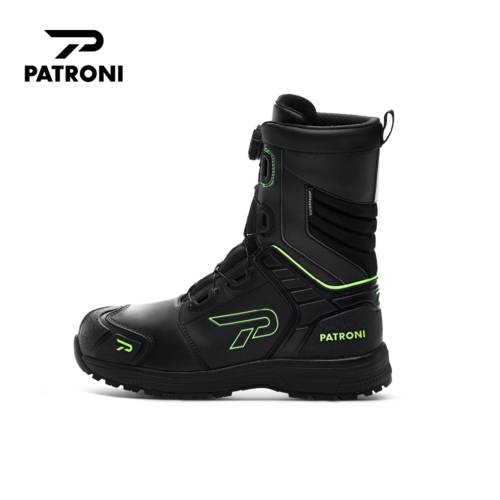4 Strategies to Boost PPE Compliance in the Workplace
Ensuring employees consistently use personal protective equipment (PPE) correctly is a continual task for employers or safety managers in numerous workplaces. While most workers acknowledge the importance of PPE for their safety on the job, the ongoing and accurate application of safety gear demands persistent effort. This guide will discover techniques to enhance PPE compliance inside your organization. These consist of powerful training, lively engagement of leadership, non-stop tracking and feedback, and enforcing fine reinforcement.
Whether your goal is to increase the use of hard hats, improve adherence to fall safety protocols or ensure more employees have the right gloves, there are techniques you can use to strengthen your company's safety culture and ensure everyone returns home without harm every day.

Importance of Proper PPE Usage
As a safety manager, prioritizing using personal protective equipment (PPE) among your employees is paramount. Ensuring compliance with PPE tips in the workplace is critical because it serves as a safety measure against accidents and ailments that would considerably affect the fitness and productivity of your workforce.
Understanding PPE Compliance
PPE compliance includes the constant adoption of PPE through employees inside the workplace. It encompasses diverse defensive equipment, including hard hats, protection glasses, gloves, respirators, and devices designed to protect workers from accidents or illnesses.
Correct Usage of PPE
The effectiveness of PPE is based on its accurate usage, making worker training a critical aspect. Proper training guarantees that employees recognize how to use and put on PPE correctly, as any deviation from the right strategies may also render the device ineffective, thereby exposing employees to risks.
Enhancing PPE Compliance
Several techniques may be carried out to reinforce PPE compliance inside your organization. Effective training is indispensable, ensuring that employees not only realize the significance of PPE but also how to use it accurately. Leadership engagement is similarly crucial, with supervisors and managers modelling PPE compliance and ensuring its constant use inside their teams.
Key areas where compliance falls short, regular tracking, and feedback offer opportunities for corrective actions. Positive reinforcement, which involves acknowledging and rewarding employees consistently following PPE guidelines, effectively promotes and sustains compliance.

A Comprehensive Look at Personal Protective Equipment (PPE)
Diverse Types of PPE
Several types of PPE are essential for protecting employees from unique dangers encountered inside the place of work.
-
Head Protection:
Workplace accidents often involve head injuries.Hard Hats, a common type of PPE, significantly reduce the risk of head injuries from falling objects or bumps. Additionally, bump caps offer protection against minor bumps or scrapes when navigating under low-hanging obstacles.
-
Hand Protection:
Hands are involved in every task, necessitating safety. Safety Glovesare available in numerous patterns and substances to shield them from chemical, thermal, electrical, and mechanical dangers. Choosing the proper gloves for a particular task is important.
-
Eye Protection:
Eye accidents can cause everlasting damage, even blindness. Goggles or protection glasses guard against debris, flying items, and chemical exposure. Welding helmets or face shields are useful while working with extreme light or chemical compounds able to inflict eye damage.
-
Respiratory Protection:
Workplace air can be contaminated, causing breathing risks. Respiratory safety consists of face masks, respirators, and air-purifying respirators, protecting the wearer from breathing in dangerous substances.
-
Foot Protection:
Feet are at risk of numerous dangers. Steel-toed boots offer safety against falling items or sharp substances, while chemical-resistant boots protect against dangerous chemical compounds. Electrical hazard boots incorporate insulating materials for those working with live electrical wires.
Strategies to Boost PPE Compliance in the Workplace
Personal Protective Equipment (PPE) plays a pivotal role in safeguarding against workplace injuries and illnesses. Yet, fostering consistent adherence to PPE usage among employees presents a significant challenge.
Knowledge and Training
Employees' effective use of PPE depends on understanding its purpose and the correct methods for putting it on and maintaining it. Comprehensive training on PPE applications and safety protocols is crucial to instil a deep understanding of the importance of PPE compliance. This training program must cover the risks of neglecting PPE usage, identifying potential workplace hazards, and preventive measures against accidents and injuries. By providing thorough education and training, employees are empowered to embrace PPE compliance actively, thereby strengthening the workplace safety culture.
Visual Cues
Consistent visible reminders serve as persistent cues, including posters and signage strategically located in mandatory PPE zones like construction sites, chemical factories, and manufacturing plants. These visual prompts explicitly emphasize the essential nature of PPE and provide clear directives on its proper use, effectively reinforcing employee PPE compliance.
Incentivizing Adherence
Implementing incentive software to understand employees' constant adherence to PPE rules is an effective motivator. Rewards may also consist of gift cards, bonuses, or a point-based system, fostering a feeling of significance around PPE compliance. This approach not only motivates employees but also cultivates healthy competition and nurtures a positive workplace culture that prioritizes safety.
Routine Evaluations
A strong approach includes accomplishing regular tests to ensure correct PPE usage and promptly address any non-compliance issues. These tests should be scheduled regularly, with results transparently shared with all employees. The assessment technique must scrutinize PPE usage, overall workplace safety, and the identification of potential hazards very well. Routine tests assure non-stop oversight of worker safety, allowing management to make well-informed, data-driven selections to enhance PPE compliance.

Overcoming Common Barriers to Compliance: Strategies to Boost PPE Compliance in the Workplace
Adhering to PPE guidelines and consistently employing safety gear is essential. Nevertheless, like any safety initiative, boosting PPE compliance within the workplace presents challenges. Non-compliance often arises from discomfort, unavailability, and insufficient knowledge or training in effectively using PPE.
Discomfort
Discomfort is a key factor in employees' reluctance to comply with PPE usage. Ill-fitting safety gear like hard hats, safety goggles, and respirators can impede job performance, prompting workers to remove them. Offering various PPE options and seeking employee feedback on comfort can promote consistent usage.
Lack of Availability
A significant obstacle to PPE compliance is the need for more availability of safety gear. Employees might hesitate to use PPE if it is not readily accessible, or the supply is limited. Employers can overcome this challenge by ensuring constant accessibility of PPE, maintaining on-site storage, and regularly restocking inventory to encourage usage.
Inadequate Knowledge or Training
More training on PPE can contribute to non-compliance among employees who may also want help understanding the suitability of equipment for their responsibilities or how to use it correctly. Employers can address this challenge by offering complete training on PPE usage, covering its significance, types, and accurate fitting and usage. Hands-on training, including demonstrations and role-playing, ensures employees use PPE correctly.
Lack of Positive Reinforcement
Employees who feel undervalued or unsupported can be much less willing to stick to PPE requirements. Employers can counter this by providing positive reinforcement, including spotting and appreciating employees with the right protection practices, expressing gratitude for compliance, and incentivizing people who show off excessive PPE usage.
Leadership's Vital Role in Fostering Safety Culture & Compliance
Ensuring that Personal Protective Equipment (PPE) is worn constantly and effectively is critical to promoting a tradition of protection inside the workplace. To gain this, leadership has to play a key role in encouraging compliance with PPE rules and procedures.
Leading by Example
Leadership sets the tone for the complete organization, which includes its protection tradition. Leaders must be visible sporting PPE constantly and effectively to enhance its significance and encourage compliance. When leaders need to remember to put on PPE, it sends a message to employees that protection isn't always a priority, which can have severe consequences.
Effective leaders actively promote protection by ensuring PPE is maintained well, and employees are educated on its proper use. Leaders who prioritize the safety of their personal conduct and employee expectancies assist in creating a tradition where protection is a shared value.
Incorporating Employee Feedback and Suggestions
Employees are at the front lines of protection and feature precious insights on enhancing PPE rules and strategies. Leaders must seek and contain worker feedback and tips to ensure that PPE rules and strategies are powerful and practical.
One manner of doing that is through regular protection conferences or idea boxes wherein employees can share their thoughts and ideas. Leaders must pay attention actively and follow through on employees' tips to expose their input to be valued and brought seriously.
Benefits of Promoting a Culture of Safety
Promoting a tradition of protection is no longer the most effective guarantee that employees go home injury-free at the end of every day; however, it has several advantages for organizations. A strong protection tradition can cause elevated morale and task satisfaction, reduced absenteeism, and reduced workers' repayment costs. Employees who feel their employers prioritize their safety are extra engaged and dedicated to their work.
Wrapping Up
Each employer and employee must emphasize using personal protective equipment (PPE). Although it can appear simple, keeping the correct and non-stop use of personal protective equipment (PPE) calls for consistent work and unwavering dedication. We can enhance our organization's protection tradition by enforcing the procedures included in this guide, including efficient training, engaged leadership, near observation and feedback, and inspiring fine reinforcement. It ensures that no employee gets harmed at the end of the day. It is crucial to recognize that PPE is an attitude that needs to be embedded in every employee, now no longer only a series of rules to follow.
OTEPLACE is an online platform that allows safety managers, such as yourself, to directly purchase all the necessary PPE to keep your employees safe in one convenient location. By purchasing through OTEPLACE, you can communicate directly with PPE brands, requests quotes, samples, and more. Purchase everything you need in one streamline process, with the assurance that the products you’re buying meet high-quality and certified standards.






















